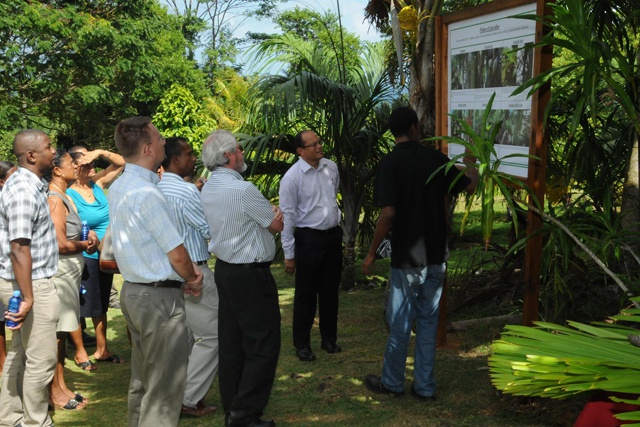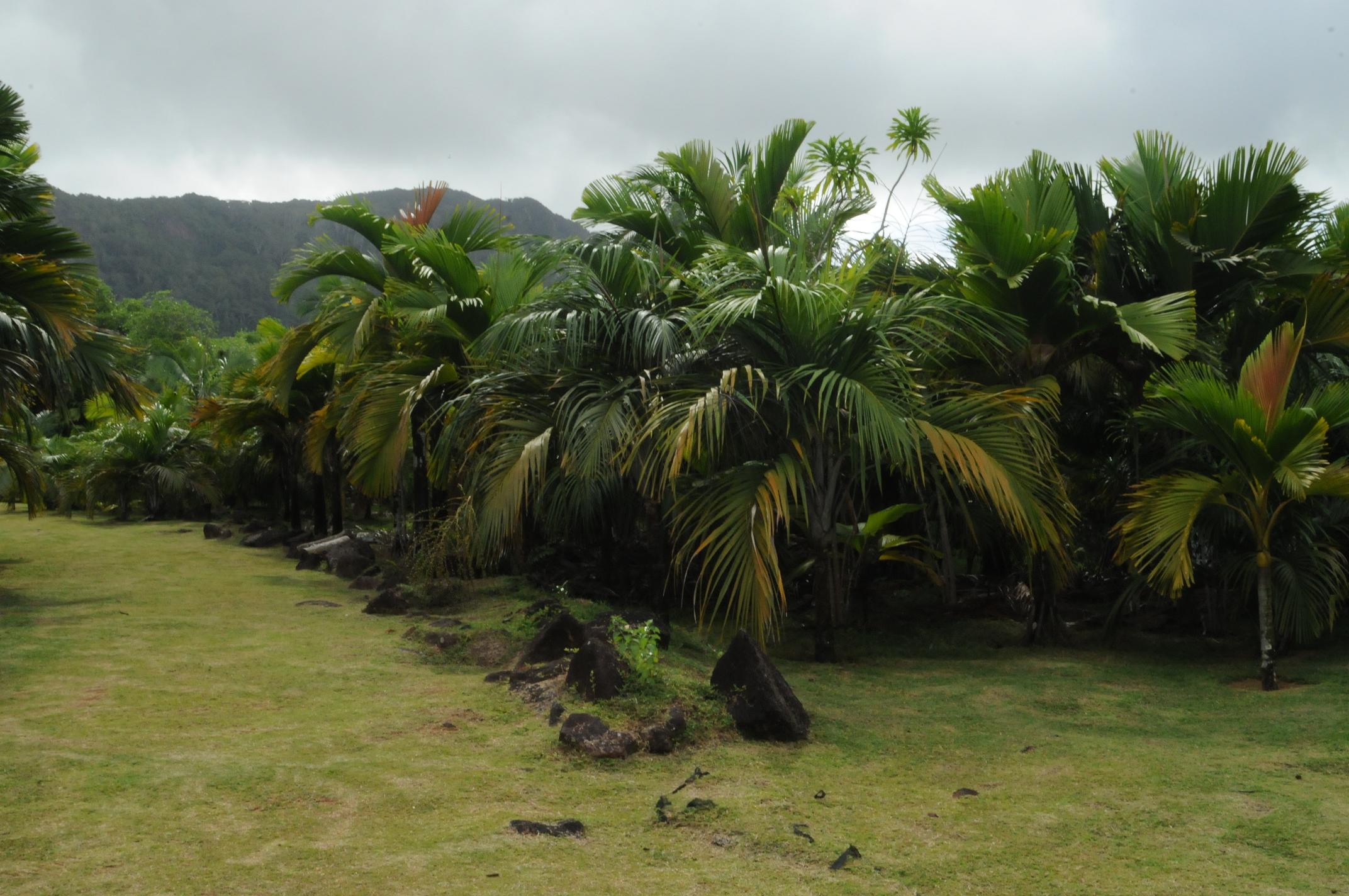Unique forest of the Seychelles' rarest species - First Arboretum opens

Environment minister Rolph Payet being shown one of the information boards at the Biodiversity centre (Louis Toussaint, Seychelles News Agency)
(Seychelles News Agency) - The freshness of the tropical greenery that Seychelles offers has never ceased to amaze visitors flying into the island and weary seafarers docking on the archipelago.
The alluring 17-hectare leafy Seychelles National Biodiversity Centre at Barbarons on Mahe's west coast is the latest brush of greenery added by this Indian Ocean nation known for its strong conservation credentials on its long list of must-visit sites.
Environment and Energy Minister Rolph Payet who inaugurated the centre on Thursday called it a "unique forest to preserve the endangered species of Seychelles”. The centre which is set to become a self-sustaining tourism site is aimed at preserving the rare and endangered species of plants that are only found within the archipelago. "This bio-diversity centre has therefore brought rare plants closer to people to enjoy nature." Payet said. The extra ordinary biodiversity in Seychelles has seen the Mahe government declaring slightly over 50 per cent as protected area.
 |
| The Biodiversity centre is a thriving home to Seychelles endangered species (Louis Toussaint, Seychelles News Agency) Photo License : CC-BY-NC |
The history of the biodiversity centre goes back to 1998 when President James Michel (then servings as vice-president) and Maurice Lousteau-Lalanne, then Principal Secretary for Environment mooted the idea to complement the smaller Botanical Garden at Mont Fleuri a kilometre away from the capital Victoria.
The Arboretum is the first of its kind in Seychelles and provides the general public and visiting dignitaries a landmark opportunity to propagate Seychelles endangered species.
According to Raymond Brioche who heads the National Botanical Garden Foundation (NBGF) the leafy site has a palm forest boasting of several species of rare plants. Among these plants include the enchanting and suggestively shaped Coco de Mer (sea coconut) which has spawned countless myths particularly on mating during stormy nights.
A coco de mer seed can weigh up to 20 kg and is the largest seed in the vegetable kingdom. NBGF’s chairman Maurice Lousteau-Lalanne said that Coco de Mer seedlings will be planted on either side of the main entrance.
 |
| Well manicured lawns for ease of visitor appeal are a hallmark of the biodiversity centre (Louis Toussaint, Seychelles News Agency) Photo License : CC-BY-NC |
President Michel set a precedent for the centre when he became the first leader to plant a Coco de Mer seedling in June 2012. Ever since other world leaders have picked the gauntlet and trooped to the Barbarons’ centre for the coco de mer planting tradition.
Mauritius premier Navin Ramgoolam became the first foreign dignitary to plant a coco de mer in the centre. President Pradibha Patil, the head of the African Union Dr Nkosazana Dhlamini-Zuma followed by President Mahinda Rajapaksa of Sri Lanka, La Reunion’s Regional Council President Didier Robert and Cabo Verde’s Jorge Carlos Fonseca have also kept the tradition by each planting the “king of the palms” at the centre.
According to Brioche many of the plants introduced to the centre’s mother plants collection were gathered from the natural habitats, by way of seeds and seedlings which are valuable scientifically and culturally rich. Among them is “Bwa de Nat", "Latanye Fey" (Latannier), Millionaire’s Salad, Bwa Mare, Bwa Sagay Torti, Bwa Zoliker among other critically endangered plants.
 |
| One of the educational boards at the recently inaugurated Biodiversity Centre at Barbarons (Louis Toussaint, Seychelles News Agency) Photo License : CC-BY-NC |
The Barbarons centre also boasts a nursery producing plants and flowers for sale to the public.
In future it is envisaged that the centre will serve as a herbarium of the many endemic plants coming from member countries within the regional bloc, Indian Ocean Commission (IOC) bloc that brings together Seychelles, Mauritius, Madagascar, Comoros and Reunion.
The arboretum is expected to attract 45,000 visitors annually. This will be double the number of patrons presently visiting the Botanical Garden "We think that this figure is achievable, because the centre at Barbarons has enormous potential and it is the sort of place where the visitor can spend a whole day and not just an hour." Lousteau-Lalanne said.
Hospitality amenities aimed at increasing visitor appeal are also set to be established within the centre. Lousteau-Lalanne said that total investment is estimated to cost some SCR55 million (€3.3million).





